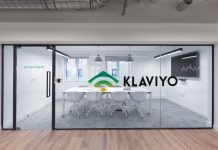Private equity fund Think3 plans to spend $1 billion to encourage and empower entrepreneurs to build more SaaS companies. The fund seeks to buy out modestly-growing companies so that founders can focus on starting the next big thing in software.
Based in Austin, TX, Think3 is an offshoot of another enterprise buy-out firm called ESW Capital, which has executed approximately 50 acquisitions over the past decade. Think3 indicates that it will transition founders within 100 days from the close of a sale to take their entire team and launch a new company, geared with half a million dollars in a no-equity angel round. Founders will also have the choice of securing $1 million in equity funding.
"We developed this fund to enable founders to take more shots on goal," said Andy Tryba, the Chief Executive Officer and founder of Think3, in an interview with TechCrunch. "Founders should think of 'time' as their portfolio — making the call earlier if their current company is growing fast enough for exit velocity. Too many founders hang on too long hoping for a growth miracle — killing their career."
While most private equity firms require the founder and team to stay on with a target company, Tryba suggests that Think3 is the only PE fund targeted at enabling entrepreneurs to take their next shot. The fund intends to help high-skilled leaders optimize their time, which he pegs at about 15-years in the startup space, and deems “the most valuable asset they have.” With the new fund, Think3 will give leaders an option that does not involve them letting down their current teams, investors and customers. The fund will also introduce founders and their teams to key venture capitalists as they launch their new company.
“The sweet spot of the companies we target are in the $5-30 million in revenue range though we are happy to look at larger companies also,” the CEO told TechCrunch. “These companies can be making or losing money. We consider both. We typically pay one to two times revenue for the company.”
























